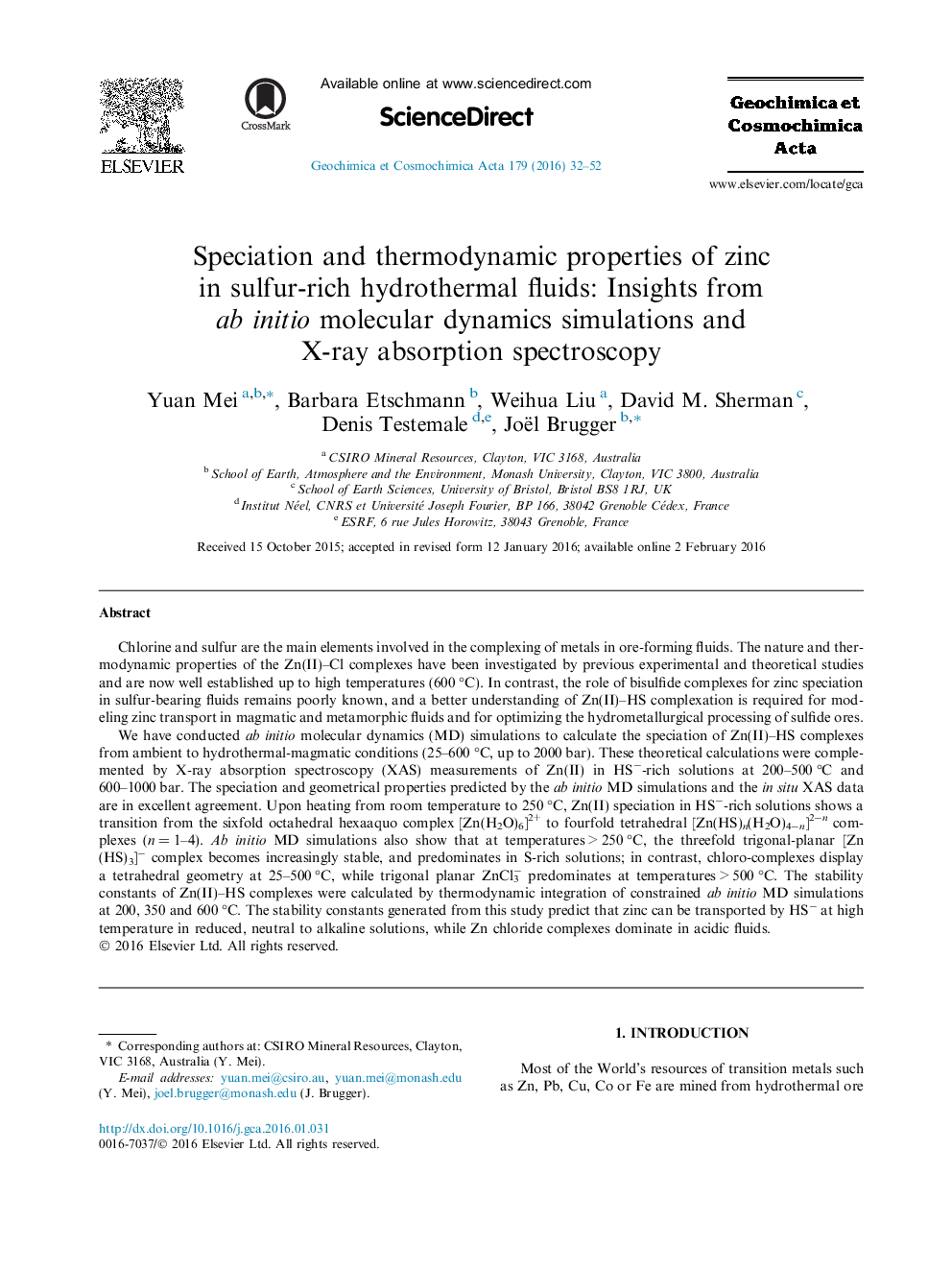| کد مقاله | کد نشریه | سال انتشار | مقاله انگلیسی | نسخه تمام متن |
|---|---|---|---|---|
| 6437581 | 1637978 | 2016 | 21 صفحه PDF | دانلود رایگان |
Chlorine and sulfur are the main elements involved in the complexing of metals in ore-forming fluids. The nature and thermodynamic properties of the Zn(II)-Cl complexes have been investigated by previous experimental and theoretical studies and are now well established up to high temperatures (600 °C). In contrast, the role of bisulfide complexes for zinc speciation in sulfur-bearing fluids remains poorly known, and a better understanding of Zn(II)-HS complexation is required for modeling zinc transport in magmatic and metamorphic fluids and for optimizing the hydrometallurgical processing of sulfide ores.We have conducted ab initio molecular dynamics (MD) simulations to calculate the speciation of Zn(II)-HS complexes from ambient to hydrothermal-magmatic conditions (25-600 °C, up to 2000 bar). These theoretical calculations were complemented by X-ray absorption spectroscopy (XAS) measurements of Zn(II) in HSâ-rich solutions at 200-500 °C and 600-1000 bar. The speciation and geometrical properties predicted by the ab initio MD simulations and the in situ XAS data are in excellent agreement. Upon heating from room temperature to 250 °C, Zn(II) speciation in HSâ-rich solutions shows a transition from the sixfold octahedral hexaaquo complex [Zn(H2O)6]2+ to fourfold tetrahedral [Zn(HS)n(H2O)4ân]2ân complexes (n = 1-4). Ab initio MD simulations also show that at temperatures > 250 °C, the threefold trigonal-planar [Zn(HS)3]â complex becomes increasingly stable, and predominates in S-rich solutions; in contrast, chloro-complexes display a tetrahedral geometry at 25-500 °C, while trigonal planar ZnCl3â predominates at temperatures > 500 °C. The stability constants of Zn(II)-HS complexes were calculated by thermodynamic integration of constrained ab initio MD simulations at 200, 350 and 600 °C. The stability constants generated from this study predict that zinc can be transported by HSâ at high temperature in reduced, neutral to alkaline solutions, while Zn chloride complexes dominate in acidic fluids.
Journal: Geochimica et Cosmochimica Acta - Volume 179, 15 April 2016, Pages 32-52
